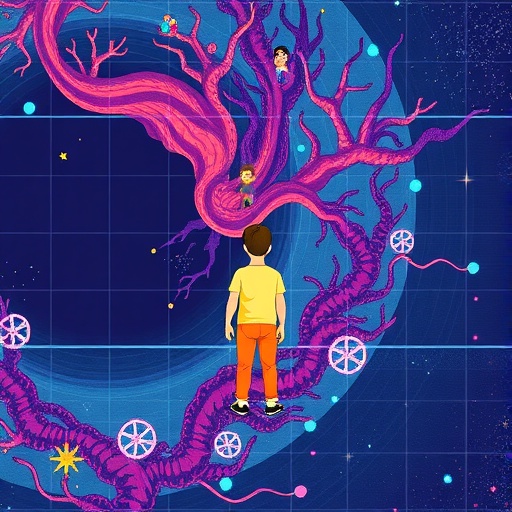In a groundbreaking study emerging from Waipapa Taumata Rau at the University of Auckland, researchers have illuminated evolving practices among New Zealand parents regarding disclosure of donor conception to their children. This pioneering survey explores the delicate interplay between family dynamics, identity formation, and legislative frameworks, setting a new precedent in understanding donor conception disclosure in the context of modern reproductive technologies.
The research involved a comprehensive survey of 374 parents whose children, aged between seven and eighteen, were conceived using donor sperm, eggs, or embryos. This represents the first cohort of donor-conceived individuals in New Zealand who have the legal right under the Human Assisted Reproductive Technology (HART) Act 2004 to access identifying information about their donors once they turn eighteen. The analysis aims to quantify disclosure rates and delve into parental motivations and experiences.
Remarkably, 86 percent of parents reported having informed their children about their donor conception origins, a figure that hints at substantial shifts in openness and communication. Yet, researchers caution that this high disclosure rate may be partially inflated by response bias, as individuals hesitant to disclose might have been underrepresented in the survey. Professor Cindy Farquhar, a leading Obstetrics and Gynaecology expert and clinical director at National Women’s Hospital, notes the encouraging trend while acknowledging the potential limitations inherent in survey-based research methodologies.
The study’s design capitalized on outreach to 1,300 parents who had utilized fertility clinics, ensuring the sample was drawn from a population with documented use of assisted reproductive technologies. Within this group, disclosure rates varied significantly based on parental family structure. Heterosexual couples disclosed donor conception origins to 82 percent of their children, while disclosure rates among same-sex couples and single parents were substantially higher, registering at 96 and 89 percent respectively. These disparities invite nuanced scrutiny into the socio-cultural factors influencing disclosure decisions.
The age at which children received this information typically adhered to international best practices recommending early disclosure. In over half of the cases, parents informed their children before the age of ten, with the average age of disclosure being just under seven years. This early introduction is associated in the literature with more positive psychological outcomes, as children have greater opportunities to assimilate their donor conception into their developing sense of self without experiencing stigma or distress.
Importantly, the survey also revealed that delayed disclosure did not correlate with increased negative emotional responses from children, challenging assumptions that earlier is always better and opening the door for a more individualized approach. Parents reported sharing information with children spanning a wide age range, emphasizing that the disclosure process is not monolithic but highly contextual and dependent on familial circumstances.
The study further highlighted the ongoing relationships some families maintain with donors, with approximately half of respondents indicating ongoing contact. This aspect underscores the complexities of modern donor conception, where traditional anonymous donation models give way to more interactive and reciprocal arrangements, promoting identity access for donor-conceived individuals and extending familial networks into new configurations.
A significant dimension of this research involved community engagement beyond the quantitative survey. The researchers convened a hui, bringing together donor-conceived individuals, family members, clinicians, and academics. Participants shared poignant narratives illustrating the spectrum of experiences with donor conception, ranging from joyful reunions with donors to feelings of anger and betrayal among those not informed during childhood. These testimonials humanize the statistics and enrich understanding of disclosure’s psychosocial impact.
Looking ahead, the research team is embarking on a qualitative phase involving in-depth interviews with participating parents to unpack the emotional and relational dynamics underlying disclosure decisions. This mixed-methods approach promises to deepen insights into how families navigate the challenges of donor conception in contemporary society, balancing confidentiality, openness, and the rights of the child.
Clinical implications from the study suggest that fertility clinics should implement structured follow-up support for parents post-conception. This support would ideally encompass guidance on how to frame and deliver donor conception information, as well as facilitating connections with donors or donor siblings. Such programs could mitigate parental anxiety around disclosure and promote cohesive family narratives, ultimately benefiting the psychosocial wellbeing of donor-conceived children.
The legal context of the HART Act 2004 underpins the entire discourse, representing a progressive framework that grants donor-conceived individuals the right to access identifying information about their donors from the age of eighteen. This legislation reflects evolving societal values prioritizing transparency and the rights of the child to knowledge of their genetic origins, thereby influencing parental disclosure practices and clinical protocols.
While the study primarily elucidates parental behaviors and attitudes, it also touches upon broader themes of identity, belonging, and the evolving conceptualization of family in the face of assisted reproductive technologies. It dovetails with international research emphasizing the psychological benefits of early and honest disclosure, furnishing empirical evidence within the unique setting of Aotearoa New Zealand.
In summary, this study marks a pivotal contribution to reproductive medicine and social science, illuminating the shifting landscape of donor conception disclosure. Through robust data and community engagement, it lays the groundwork for more informed clinical practices and policy development, ensuring that donor-conceived individuals in New Zealand – and potentially beyond – can navigate their origins with clarity, dignity, and psychological resilience.
Subject of Research: People
Article Title: Donor identity in Aotearoa New Zealand: a survey of parents regarding disclosure of donor conception to their donor-conceived children
News Publication Date: 6-Aug-2025
Web References: DOI: 10.1016/j.fertnstert.2025.07.1221
Keywords: Health and medicine, Social sciences




